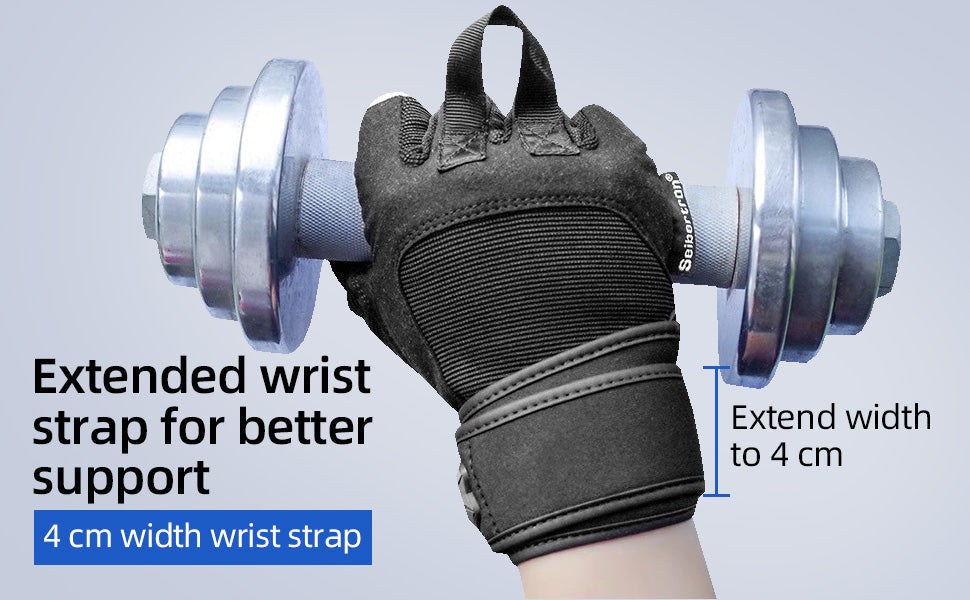Can You Build Grip Strength with Gloves? The Ultimate Guide
Grip strength is essential for many activities, from weightlifting and rock climbing to everyday tasks like opening jars and carrying groceries. Many people wonder if wearing gloves helps or hinders grip strength development. The answer is complex and depends on the type of gloves, the activity, and your goals. This comprehensive guide explores the impact of gloves on grip strength, helping you make informed decisions about your training and equipment.
Understanding Grip Strength
What is Grip Strength?
Grip strength refers to the force exerted by your hand when gripping or holding an object. It involves a complex interplay of muscles in your hand, forearm, and upper arm. Strong grip strength is associated with better overall physical function, improved athletic performance, and even increased longevity.
Types of Grip Strength
- Crush Grip: The ability to squeeze an object between your fingers and palm (e.g., crushing a can).
- Pinch Grip: The ability to hold an object between your fingers and thumb (e.g., pinching a plate).
- Support Grip: The ability to hold onto an object for an extended period (e.g., holding a barbell).
- Hook Grip: A specialized grip used in weightlifting, where the thumb wraps around the barbell and is secured by the fingers.
Why is Grip Strength Important?
Grip strength is crucial for:
- Weightlifting: Strong grip allows you to lift heavier weights and perform more repetitions.
- Rock Climbing: Grip strength is essential for holding onto small holds and maintaining stability on the wall.
- Sports: Many sports, such as football, basketball, and baseball, require strong grip for ball control and performance.
- Everyday Tasks: Strong grip makes it easier to perform everyday tasks, such as opening jars, carrying groceries, and using tools.
- Injury Prevention: Adequate grip strength can help prevent injuries by providing stability and control during physical activities.
The Impact of Gloves on Grip Strength: A Detailed Look
The effect of gloves on grip strength is not straightforward. While some gloves can enhance grip, others may hinder it. It's important to understand the characteristics of different gloves and how they interact with the activity you're performing.
Gloves That Can Enhance Grip Strength
- Weightlifting Gloves with Enhanced Grip: These gloves often feature Ultra-Sticky Grip Gloves on the palms, providing a more secure hold on the barbell or dumbbells. This can allow you to lift heavier weights and perform more repetitions without your grip failing.
- Climbing Gloves: Some climbing gloves are designed to enhance grip on rock surfaces. They may use specialized materials or textures to increase friction and improve your hold.
- Sports Gloves: Gloves designed for specific sports, such as football receiver gloves or baseball batting gloves, can significantly enhance grip and ball control. These gloves often incorporate Tacky Palm Gloves to provide a secure hold on the ball or bat.
Gloves That May Hinder Grip Strength
- Gloves That Are Too Thick: Gloves that are too thick can reduce your tactile feedback and make it harder to grip objects securely. This can be particularly detrimental in activities that require fine motor control.
- Gloves That Don't Fit Properly: Gloves that are too loose or too tight can interfere with your grip. Loose gloves can slip and slide, reducing your control, while tight gloves can restrict circulation and reduce your hand strength.
- Gloves That Are Not Designed for Grip: Some gloves are designed primarily for protection or warmth and may not be optimized for grip. These gloves may have smooth surfaces or bulky designs that make it difficult to hold onto objects.
The Importance of Material and Design
The material and design of gloves play a crucial role in their impact on grip strength. Consider the following factors:
- Material: Gloves made from leather, silicone, or synthetic materials with textured surfaces tend to provide better grip than gloves made from smooth materials like cotton or nylon.
- Thickness: Thinner gloves generally provide better tactile feedback and allow for a more natural grip. However, thicker gloves may offer more protection and cushioning.
- Finger Design: Gloves with articulated fingers or pre-curved designs can improve dexterity and allow for a more comfortable grip.
- Palm Design: Gloves with reinforced palms or specialized grip patterns can enhance grip strength and durability.
Specific Types of Gloves and Their Impact on Grip
Let's examine the impact of gloves on grip strength in different activities:
Weightlifting Gloves

Weightlifting gloves are a common accessory for lifters of all levels. Here's how they can affect grip:
- Pros:
- Can improve grip security, especially for lifters with sweaty hands.
- Can reduce the risk of calluses and blisters.
- Non-Slip Football Gloves share a similar technology base, improving grip on weights.
- Cons:
- Can reduce tactile feedback and make it harder to feel the bar.
- Can increase the bar diameter, making it harder to wrap your fingers around it.
- Over-reliance on gloves can hinder the development of natural grip strength.
Climbing Gloves

Climbing gloves are used by some climbers to protect their hands and improve grip. Here's how they can affect grip:
- Pros:
- Can provide protection from sharp rock surfaces.
- Can improve grip on certain types of holds.
- Cons:
- Can reduce tactile feedback and make it harder to feel the rock.
- Can make it harder to grip small holds.
- Many climbers prefer bare hands for maximum sensitivity and grip.
Sports Gloves
Sports gloves are designed to enhance grip and ball control in various sports. Here's how they can affect grip:
- Pros:
- Can significantly improve grip on the ball or bat.
- Can provide protection from impact and abrasion.
- Top-Rated Receiver Gloves are designed for optimal grip and performance.
- Cons:
- May reduce tactile feedback in some cases.
- May not be allowed in all leagues or competitions.
Grip Strength Training Without Gloves
While gloves can be helpful in certain situations, it's important to develop natural grip strength through dedicated training. Here are some exercises that can help:
- Deadlifts: A compound exercise that works the entire body, including the grip muscles.
- Pull-ups: A bodyweight exercise that requires strong grip to hold onto the bar.
- Farmer's Walks: A loaded carry exercise that challenges your grip endurance.
- Grip-Specific Exercises: Exercises such as wrist curls, reverse wrist curls, and gripper exercises can directly target the grip muscles.
Choosing the Right Gloves: A Summary
In summary, the impact of gloves on grip strength depends on several factors:
- The type of activity: Weightlifting, climbing, and sports have different demands on grip.
- The design and materials of the gloves: Look for gloves that are optimized for grip and provide a comfortable fit.
- Your individual needs and goals: Consider whether you prioritize grip enhancement, protection, or comfort.
Ultimately, the best way to determine whether gloves are right for you is to experiment and see how they affect your performance. Pay attention to how your grip feels with and without gloves, and choose the option that allows you to perform at your best.
Final Thoughts: Balance and Progress
Building grip strength is a multifaceted endeavor. While gloves can play a role in certain situations, it's important to prioritize natural grip strength development through dedicated training. By understanding the pros and cons of different types of gloves and incorporating grip-specific exercises into your routine, you can optimize your grip strength and achieve your fitness goals.
Frequently Asked Questions About Grip Strength and Gloves
Yes, weightlifting gloves with enhanced grip can improve your hold on the barbell or dumbbells, allowing you to lift heavier weights and perform more repetitions.
Some climbing gloves are designed to enhance grip on rock surfaces. However, many climbers prefer bare hands for maximum sensitivity and grip.
No, sports gloves may not be allowed in all leagues or competitions. Check the specific rules of the league or organization before using gloves.
Yes, over-reliance on gloves can hinder the development of natural grip strength. It's important to balance the use of gloves with dedicated grip training.
Some of the best exercises for improving grip strength include deadlifts, pull-ups, farmer's walks, wrist curls, and gripper exercises.
Look for weightlifting gloves that fit snugly but not too tightly, provide a comfortable grip, and are made from durable materials with enhanced grip surfaces.
Potentially yes, if the activity would benefit from an increased grip and stickiness. One would consider the appropriateness of the gloves to the activity.
Carrying a motorcycle backpack, especially when loaded with gear, can engage your grip and forearm muscles, providing a subtle form of grip training. Choosing a backpack with ergonomic design and adjustable straps, like Seibertron backpacks, can enhance comfort and balance, contributing to overall physical well-being.
Explore our collection of high-performance gloves and sports gear at Seibertron's Outdoor Glove Collection!

